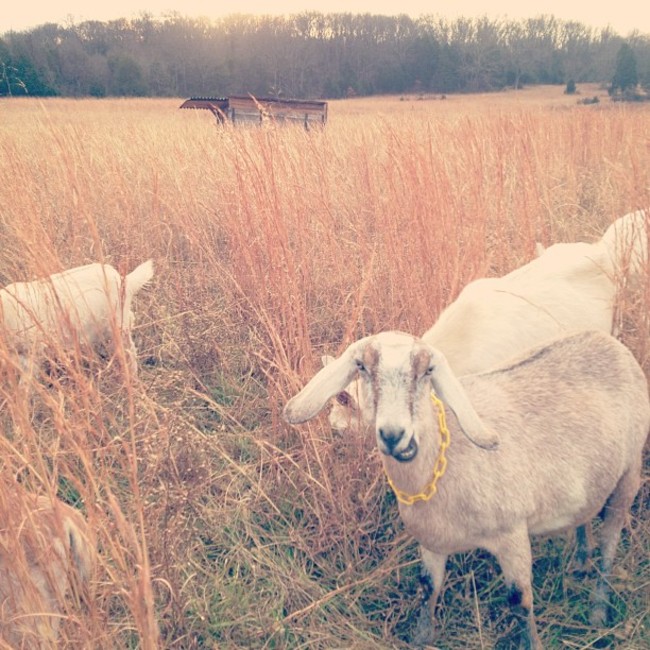 Bridget says, "Yeah, I could use a breather"
Bridget says, "Yeah, I could use a breather"
Now that it's officially the middle of December (time flies), we've started "drying off" the dairy goats. What does that mean? It means that in January we are going to stop milking for a few months and this is the first step towards making that a possibility. A week or two ago we switched from milking twice per day to milking once per day. If we were to abruptly stop milking altogether we'd risk the goats getting an infection, and even doing it slowly we still run that risk. You can just imagine their udders being full and no one to milk them, not a good situation. So we still milk, just a little less often. Over the course of December we'll also tone back the sprouted grains we're feeding and gently work their bodies out of milk production.
Around the end of December/beginning of January we'll stop milking completely and wait to milk again until the Spring when the goats "kid" (give birth). The three month break gives the girls a chance to rest and focus their bodily energy on growing strong and healthy kids for Spring. It's also colder outside, so the more of their caloric intake that they can keep within their bodies the warmer they'll be (putting on the holiday pounds and not feeling bad about it).
Our style of dairying is called "seasonal dairying". We try to have all of the goats "kid" around the same time in early spring (March/April). We'll milk from April through December and then everyone gets a break, including us.
Seasonal dairying used to be the norm for milk producers. Most dairy farmers would choose the winter months for a rest. The grass stops growing as fast and it's really cold outside. Timing births for early spring also makes sense, since that's when grass growth is the strongest.
